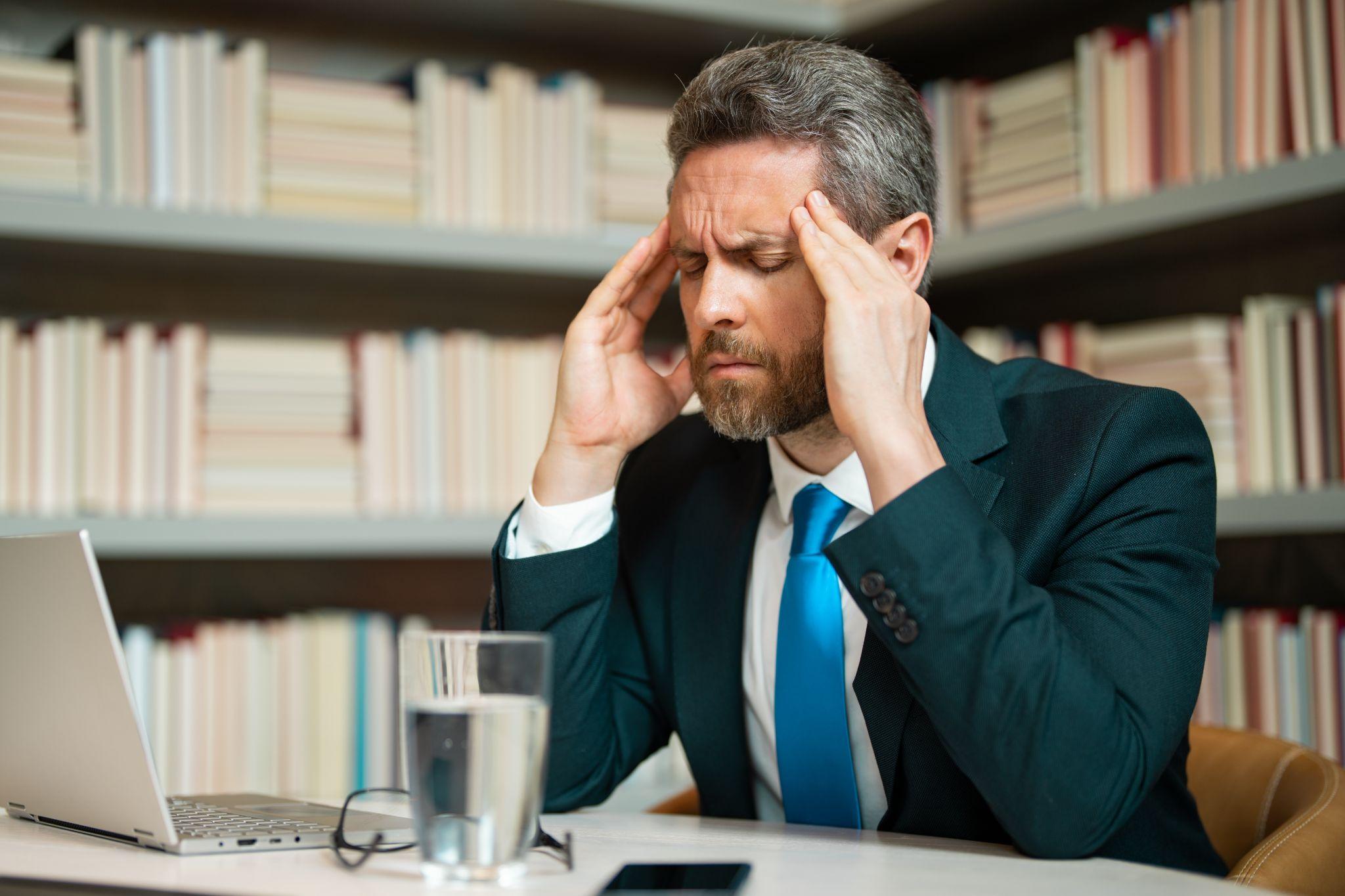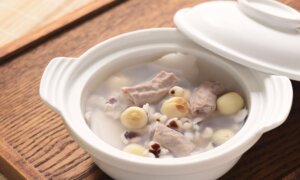Some people experience headaches due to high work pressure or emotional stress. Traditional Chinese medicine (TCM) has been shown to be effective in relieving and treating headaches. When a headache strikes, you might find relief with simple yet effective remedies like acupressure massage or a cup of chrysanthemum tea.
A randomized clinical trial published in JAMA Internal Medicine found that acupuncture may be effective in improving migraines. After 16 weeks of electroacupuncture treatment at specific acupoints, patients in the treatment group experienced a significant reduction in headache frequency compared to those who received sham acupuncture (simulated treatment at non-acupoint locations). The benefits persisted for up to 24 weeks after the treatment ended.
Types of Headaches and Relief Methods
In addition to acupuncture, massaging acupressure points (acupoints) can also help relieve headaches. Headaches can arise from various factors, but they generally fall into three main categories:
1. Headaches Caused by Poor Posture
People who spend long hours working in front of computer or phone screens often unconsciously hunch over, leading to stiffness in the neck muscles and headaches. In such cases, massaging the Chize acupoint on the arm can provide quick relief. When pressed, this acupoint may feel sore or slightly swollen.

Location of the Chize acupoint. (The Epoch Times)
Method
Gently massage the acupoint in a circular motion 10 times, applying pressure for three to five seconds each time.
While applying pressure, slowly move your neck on the same side and shrug your shoulders to help relax the neck and shoulder muscles. This helps improve blood circulation and relieve the headache.
Maintaining proper posture is also essential—keep your back straight and your neck aligned to prevent headaches in the long run.
2. Headaches Triggered by High Stress
People experiencing high levels of work-related stress often suffer from headaches. Symptoms may include eye strain, nausea, and, in severe cases, pain so intense that it feels unbearable. These headaches, commonly called migraines, can also lead to irritability. In such cases, massaging the Hegu acupoint on the hand can provide quick relief.

Location of the Hegu acupoint. (The Epoch Times)
Method
Place the thumb of one hand on the webbing between the thumb and index finger of the other hand. The point where your thumb naturally rests is the Hegu acupoint.
Apply firm pressure with your thumb, massaging in circular motions for three to five seconds each time, repeating 10 times. You should feel a sore, tingling sensation when pressing this acupoint. This technique often provides quick relief from migraines.
Caution: Pregnant women should avoid stimulating this acupoint, as it may trigger uterine contractions or lead to premature labor.
3. Headaches Due to Insufficient or Excessive Sleep
Some people frequently experience sleep deprivation due to demanding work schedules or heavy academic workloads. An
observational study asked 55 patients with migraines or tension-type headaches to track their daily stress levels, sleep duration, and headache occurrences. The results showed that participants were most likely to develop headaches after experiencing two consecutive days of high stress or reduced sleep. Additionally, the less sleep they got, the more severe their headaches became.
On the other hand, some people who suffer from chronic sleep deprivation tend to oversleep on weekends, sometimes staying in bed until noon—only to wake up with a headache. In such cases, massaging the Yongquan acupoint on the sole of the foot can provide relief.

Location of the Yongquan acupoint. (The Epoch Times)
Method
Use your thumb to apply pressure to the Yongquan acupoint, massaging each foot 10 times for three to five seconds each time. Stimulating this acupoint helps direct the body’s qi (energy) downward, which may relieve headaches.
Additionally, it is important to regulate weekend sleep schedules—ideally, waking up no more than two hours later than usual. This is particularly crucial for those prone to migraines, as oversleeping can worsen symptoms.
Stimulating these three acupoints provides quick headache relief, but identifying and addressing the root cause is essential for long-term improvement.
Lifestyle Habits That Trigger Headaches
According to TCM, certain lifestyle habits may increase susceptibility to headaches, including:
Sleeping With Wet Hair
Going to bed immediately after washing the hair and not drying it thoroughly can cause the scalp and neck to become chilled, leading to blood vessel constriction and, in turn, headaches.
Consuming Cold Foods and Drinks
Regular consumption of ice, cold beverages, ice cream, or cold dishes throughout the year increases susceptibility to migraines.
Blasting Cold Air Directly at the Body
Air conditioning at very low temperatures or high-speed electric fans directing cold air straight to the body can cause excessive cold to enter the body, potentially leading to various discomforts, including headaches.
Dressing too Lightly
Wearing inadequate clothing in any season can cause a significant temperature difference between the body and the environment, leading to sudden contraction of blood vessels in the brain, which may trigger headaches. This is particularly important in cold weather—dressing warmly and keeping the neck covered with a scarf can help prevent headaches caused by drastic temperature changes.
A Taiwanese study found a strong link between temperature fluctuations and headache occurrences in cold weather. For example, headaches tend to occur more frequently following a cold front. This highlights the importance of keeping warm as a key preventive measure against headaches.
Chrysanthemum Tea for Headache Relief
Chrysanthemum tea is particularly effective in relieving headaches. Keeping a small jar of dried chrysanthemum flowers at work can be useful for quick relief. When a headache strikes, simply place a few flowers in a cup, pour in hot water, let it steep for a moment, and enjoy its light, fragrant flavor.
The ancient TCM text “Shennong’s Classic of Materia Medica (Shennong Bencao Jing)” records that chrysanthemum can treat dizziness, head pressure, protruding eyes, and excessive tearing caused by excessive wind exposure.
Chrysanthemum tea is also widely used to relieve headaches caused by inflammation or the common cold. A well-known medicinal tea called Sang Ju Yin contains mulberry leaves, chrysanthemum, and mint, making it particularly effective for treating cold-induced headaches and coughs.
Studies have found that chrysanthemum contains more than 10 key anti-inflammatory compounds, which help reduce pro-inflammatory cytokines.
However, those with spleen-stomach yang deficiency or those prone to cold hands and feet should avoid drinking too much chrysanthemum tea, as it has a cooling nature that may further weaken digestion and worsen cold-related symptoms. Symptoms of spleen-stomach yang deficiency include frequent diarrhea, indigestion, and severe bloating or stomach pain after eating cold foods.
Frequently Asked Questions
Can Drinking Coffee Relieve Headaches?
Drinking a small amount of coffee may help those who frequently suffer from headaches. Caffeine stimulates the nervous system and can temporarily relieve headaches by constricting blood vessels in the brain. However, coffee should not be consumed in excess or relied upon as a remedy, as it can trigger or worsen headaches.
A review indicated that caffeine can enhance the effectiveness of painkillers. The optimal dose for headache relief is around 130 mg of caffeine, while a lower dose of less than 60 mg is usually ineffective. For reference, 130 mg of caffeine is roughly equivalent to two espresso shots.
Cold or Heat Therapy–Which Is Better for Headaches?
For headaches caused by neck stiffness, applying a warm compress to the neck with a towel can promote blood circulation and provide relief. Heat therapy is particularly beneficial for chronic headaches associated with poor local circulation. A warm bath can also help relax tense muscles, further alleviating headache symptoms.
If headaches occur frequently, it is best to see a doctor for proper evaluation and treatment.











